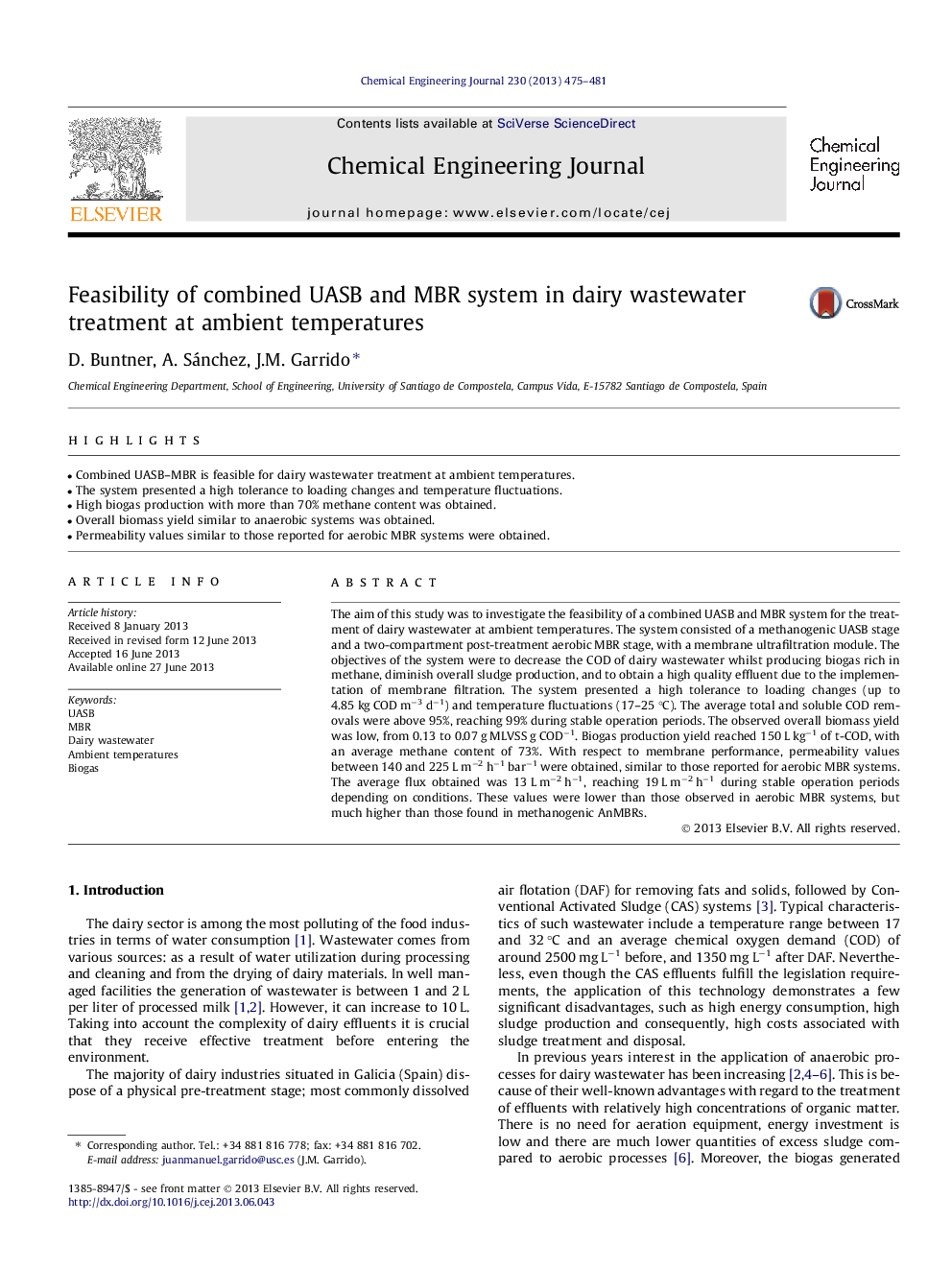| Article ID | Journal | Published Year | Pages | File Type |
|---|---|---|---|---|
| 148396 | Chemical Engineering Journal | 2013 | 7 Pages |
•Combined UASB–MBR is feasible for dairy wastewater treatment at ambient temperatures.•The system presented a high tolerance to loading changes and temperature fluctuations.•High biogas production with more than 70% methane content was obtained.•Overall biomass yield similar to anaerobic systems was obtained.•Permeability values similar to those reported for aerobic MBR systems were obtained.
The aim of this study was to investigate the feasibility of a combined UASB and MBR system for the treatment of dairy wastewater at ambient temperatures. The system consisted of a methanogenic UASB stage and a two-compartment post-treatment aerobic MBR stage, with a membrane ultrafiltration module. The objectives of the system were to decrease the COD of dairy wastewater whilst producing biogas rich in methane, diminish overall sludge production, and to obtain a high quality effluent due to the implementation of membrane filtration. The system presented a high tolerance to loading changes (up to 4.85 kg COD m−3 d−1) and temperature fluctuations (17–25 °C). The average total and soluble COD removals were above 95%, reaching 99% during stable operation periods. The observed overall biomass yield was low, from 0.13 to 0.07 g MLVSS g COD−1. Biogas production yield reached 150 L kg−1 of t-COD, with an average methane content of 73%. With respect to membrane performance, permeability values between 140 and 225 L m−2 h−1 bar−1 were obtained, similar to those reported for aerobic MBR systems. The average flux obtained was 13 L m−2 h−1, reaching 19 L m−2 h−1 during stable operation periods depending on conditions. These values were lower than those observed in aerobic MBR systems, but much higher than those found in methanogenic AnMBRs.
